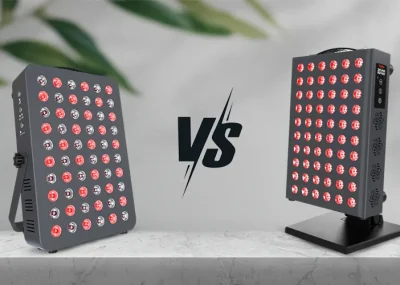Overview
In the sphere of health and wellness, few names resonate as strongly as Dr. Terry Wahls. A seasoned medical professional, Dr. Wahls’ journey into the world of multiple sclerosis (MS) is deeply personal. She herself is an MS patient, having been diagnosed years ago. This experience has not only shaped her understanding of the disease but also led her to explore alternative ways to manage its symptoms.
With her unique approach to managing the condition, Dr. Wahls has become a beacon of hope for many MS patients. She advocates a lifestyle centered around healthy dietary habits and specific lifestyle changes, aiming to slow disease progression and improve quality of life.
A key aspect of Dr. Wahls’ approach is her interest in red light therapy (RLT). She believes this innovative treatment can benefit those dealing with MS. Here’s a deeper look into her views on RLT, providing a comprehensive understanding of its potential impact on MS management.
What is Multiple Sclerosis (MS)?
Multiple Sclerosis (MS) is a complex and often unpredictable condition that impacts the nervous system. MS is an autoimmune disease, meaning it occurs when the body’s immune system mistakenly attacks healthy parts of the body – in this case, the protective covering of nerve fibers known as myelin[1].
When myelin is damaged or destroyed, the communication between your brain and the rest of your body can be disrupted or slowed down. This process can lead to a wide range of symptoms, varying greatly from person to person. Some people may experience mild symptoms like fatigue or numbness, while others may have difficulty with movement or coordination[1].
The exact cause of MS remains unknown, although it’s likely a combination of genetic and environmental factors. There’s no cure for MS currently, but treatments are available to manage symptoms and slow the progression of the disease.
One of these treatments, championed by Dr. Terry Wahls, is red light therapy (RLT). RLT uses specific wavelengths of light to stimulate cellular healing and regeneration, which could potentially help manage some symptoms of MS. While further research is needed to fully understand the impact of RLT on MS, the therapy holds promise as a non-invasive, drug-free treatment option[2].
Dr. Terry Wahls’ MS Protocol
When it comes to managing MS, Dr. Terry Wahls has developed a holistic protocol that’s worth exploring. This approach goes beyond conventional treatments, focusing on lifestyle changes and innovative therapies.
Central to her protocol is the emphasis on nutrition. Dr. Wahls designed a diet plan prioritizing nutrients that support brain health and cellular function. This isn’t just about eating healthy foods; it’s about consuming the right nutrients to manage MS symptoms.
Exercise is another key element in Dr. Wahls’ protocol. Regular physical activity can help improve mobility and overall quality of life for individuals with MS. It’s not about intense workouts, but consistent, manageable exercises that suit each individual’s capacity and needs[3].
Stress management also plays a significant role. Stress can exacerbate MS symptoms, so finding effective ways to manage it is crucial. This could involve mindfulness practices, meditation, or other relaxation techniques that work for the individual[4].
Recently, Dr. Wahls has added red light therapy (RLT) to her protocol. RLT uses red and near-infrared light to stimulate cellular healing and regeneration. The process involves the interaction of light with mitochondria, the powerhouses of our cells. This interaction enhances the mitochondria’s efficiency in producing ATP, the energy currency of cells. This boost in cellular energy contributes to DNA repair, protein synthesis, and overall better health.
Dr. Wahls uses products like SaunaSpace and LifePro for her RLT sessions. These brands offer devices that combine RLT with heat therapy, stimulating biological processes that reduce inflammation, improve oxygenation, and boost cellular energy production.
Benefits of Red Light Therapy for MS
- Reduction of Inflammation: Inflammation is a common characteristic in MS, often resulting in the damage of nerve fibers. A 2011 study suggests that RLT can help reduce this inflammation, potentially alleviating symptoms and slowing disease progression[5].
- Enhanced Cellular Energy Production: RLT works by stimulating mitochondria, the powerhouses within our cells responsible for creating ATP, our cells’ primary energy source. This enhancement in energy production can support overall health and potentially counteract fatigue, a frequent concern for individuals with MS.
- Improved Muscle Strength and Mobility: By encouraging cellular repair and regeneration, RLT may aid in preserving muscle function, which can be compromised in MS. This could lead to improvements in physical capabilities, enhancing mobility and quality of life[7].
- Non-Invasive Treatment Option: RLT is a drug-free, non-invasive therapy. For those seeking to avoid medications or looking for complementary treatments to their existing regimen, RLT offers a promising alternative.
- Potential Neuroprotective Effects: Preliminary research suggests RLT might have neuroprotective effects, potentially safeguarding the nervous system from further damage[6]. While these findings are early-stage, they offer hope for future treatment possibilities.
Implementing RLT in MS Management
Dr. Terry Wahls suggests incorporating RLT into daily routines. She does not prescribe strict time limits or super-specific recommendations. Instead, she encourages using RLT in a way that suits individual lifestyles and preferences.
For instance, one can use RLT while working out, contributing to muscle strength and energy production. Alternatively, it can be used during leisure time, such as while watching TV. This flexibility allows you to integrate RLT seamlessly into your life, making it a more sustainable treatment option.
However, consistency is key. Regular sessions are recommended to achieve the potential benefits of RLT, such as reduced inflammation and improved cellular energy production.
Start slow, with shorter sessions, and gradually increase the duration as your body adjusts to the therapy. It’s always advisable to monitor how your body responds to the treatment and adjust accordingly.
Frequently Asked Questions
Why does Dr. Wahls advocate for RLT in MS management?
A: Dr. Wahls has found RLT beneficial in her own journey with MS. She values its potential to reduce inflammation, boost cellular energy, and improve muscle strength. She also emphasizes that it should complement, not replace, existing treatments.
What RLT devices does Dr. Wahls use?
A: Dr. Wahls uses products from SaunaSpace and LifePro. These devices combine RLT with heat therapy, providing a comprehensive treatment experience. However, she advises individuals to tailor usage based on their specific needs and tolerance levels.
How often should RLT be used?
A: Dr. Wahls encourages daily use of RLT, integrated into regular routines. She advises starting with shorter sessions and gradually increasing duration as the body adjusts to the therapy.
What should individuals with heat intolerance do?
A: Heat intolerance is common in MS. For such individuals, Dr. Wahls recommends a gradual approach. Start with shorter sessions and slowly extend them over time. Also, consider adjusting the distance between the target body area and the device.
Conclusion
The advocacy of Dr. Terry Wahls for Red Light Therapy (RLT) in managing MS symptoms offers a promising perspective on non-invasive treatment options. RLT, with its potential to reduce inflammation, boost cellular energy, and improve muscle strength, presents an intriguing addition to traditional MS management strategies.
However, it’s essential to remember that RLT is not a silver bullet, but rather a complementary therapy. Consistency, personalization, and open dialogue with healthcare professionals are key to integrating RLT into your regimen effectively.
As research continues to evolve, stay informed and open to new possibilities. Your journey with MS is unique, and so should your approach to managing it. RLT could be one piece of your larger wellness puzzle. Embrace the potential, but navigate with care and knowledge.








